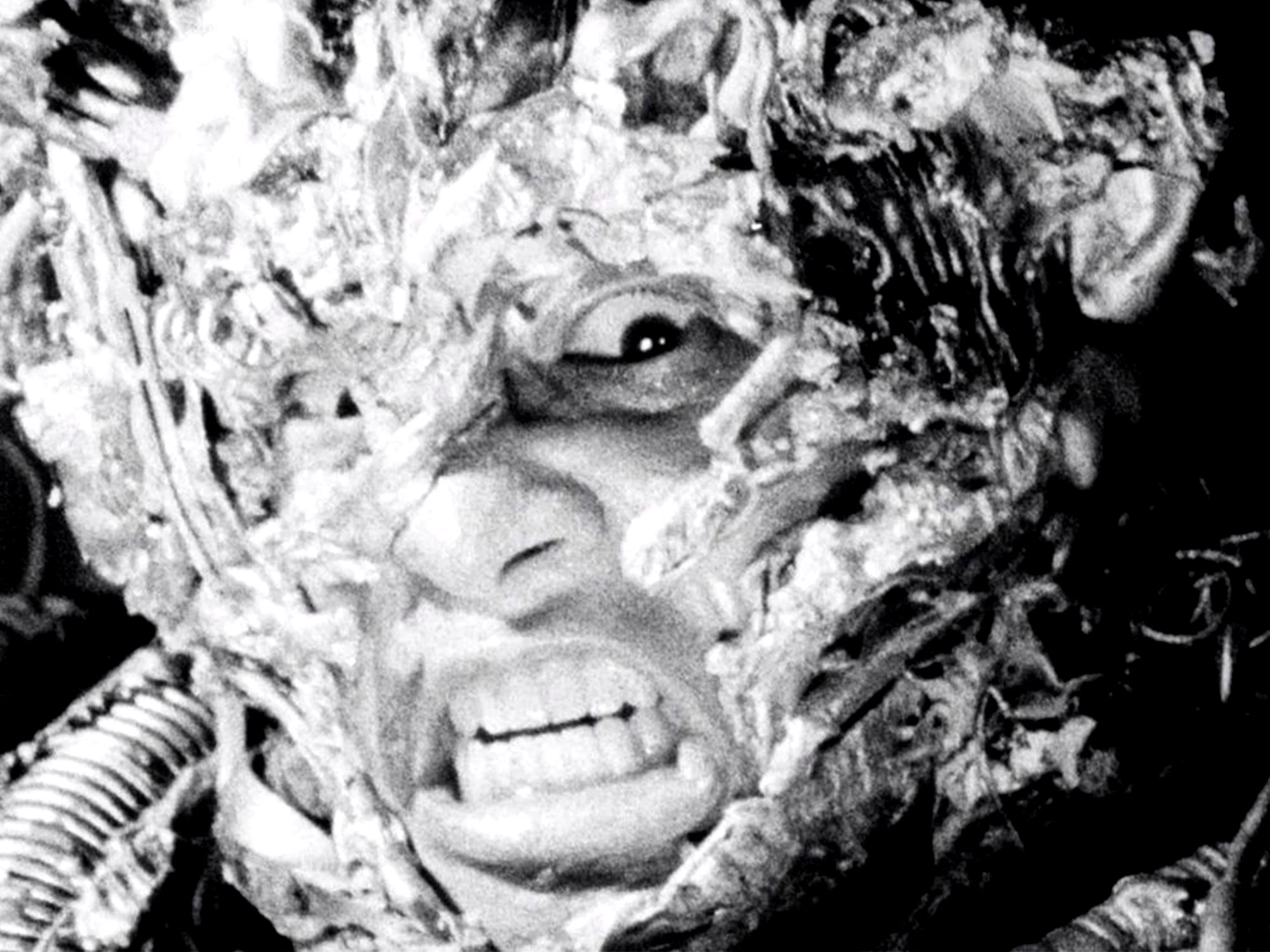
A creature is spread by sexual contact and ends up infecting a tower block. A fly finds its way into a teleportation device and causes strange mutations in a scientist. These are the kinds of images that come to mind when we think of body horror: essentially, the early films of David Cronenberg, what he called the body trying to derail biology, and, by extension, destiny. But Tetsuo: The Iron Man, a pulsing technological nightmare that celebrates its 30th anniversary in 2019 turns body horror on its head, looking away from biology and towards technology, creating a dystopian look at how we relate to technology, and how it relates to us.
The perils and promises of the kinds of technology that once felt like science fiction but have now become reality has been a point fascination for so much pop culture – from the endless doom and gloom of Black Mirror to the power of transhumanism in Years and Years. This makes the prescience of a film like Tetsuo even harder to ignore, and makes it even more disturbing to revisit now. Shin’ya Tsukamoto’s cyberpunk oddity turns the notion of transhumanism into a body-destroying nightmare.
The very first images we see in the film feel like a kind of crude representation of transhumanism itself: an unnamed man – credited as the “Metal Fetishist” – inserts pieces of metal into a wound in his leg. He runs a screw in-between his teeth, hinting at a fusion of metal and flesh. While this happens, we see a montage of bodies literally burning as he inserts metal into himself, there’s a deliberate rejection of biology in favour of technology.
But the Metal Fetishist isn’t long for this world. He’s run over by an unnamed character – credited as Man – although that isn’t the end of his story. He exacts revenge on the Man after his death, seeming to pass on his mechanical body as though it’s some kind of virus. There’s a dark irony to the fact that the Metal Fetishist is run over, killed by machinery.
The virus that infects the Man exists beyond just his perspective. We see events through the lens of strange metallic masses on train platforms, through the handycams of a stalker in the woods. Tetsuo deeply immerses itself in technology as a way of seeing the world. These ideas – including the aforementioned metal mass infecting a woman who prods at it with a scalpel – establish a relationship between people and technology where the latter treat the former as hosts, as ways of coming to life and taking control.
It’s a dark inversion of the utopian ideals of transhumanism, where instead of humans using technology as a way of advancing themselves the opposite becomes true. Humans are used as vessels for the advancement of rogue technologies, the biology of body horror being rejected for a nightmare in chrome.

Tetsuo forces morbid fusions of biology and technology through its depiction of the monstrous sexuality that comes with being infected by the Metal Fetishist’s virus. In a nightmare the Man has, he encounters a dancer who pegs him with her metallic phallus. But that’s just the tip of the iceberg when it comes to the strange sexuality of Tetsuo – in one infamous sequence, the Man’s genitals transform into a drill.
The link between sexuality and transformation is an inherent part of body horror, and in the case of Tetsuo biology is rejected in favour of technology; the sexual encounters in Tetsuo are soundtracked by scraping metal. The idea of the human body being replaced by technology also comes to the fore when injuries the Man sustains are healed – rather than taking the form of flesh and blood, instead his wounds are covered up by metal, as if this new layer of his body were the next stage in his evolution.
More than stating some of the ways in which technology can be considered a danger to humanity, Tetsuo presents the loss of biology and humanness to technology and machinery as being inevitable, the next step in the advancement of our species. That this happens to be so dark and monstrous is what makes the film so fascinating.
At the climax of Tetsuo, the Metal Fetishist, still living on inside machinery confronts the Man and tells him that even his brain will turn to metal – from his skin through to his organs, he has become a machine. His memories are even replayed on TV screens, humanity and biology are cast aside for a future of machinery and metallic mutation. As Cronenberg once put it, long live the new flesh.
The post Tetsuo: The Iron Man and the dark side of transhumanism appeared first on Little White Lies.
![Forest Essentials [CPV] WW](https://s3-us-west-2.amazonaws.com/pcw-uploads/logos/forest-essentials-promo-codes-coupons.png)
0 comments